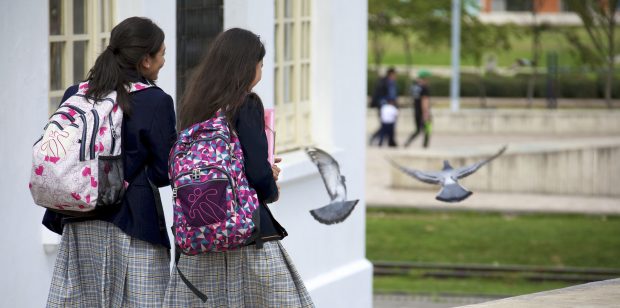
Today’s Education in the media blog focuses on the narrowing gap between the attainment of disadvantaged pupils and their peers, as well as addressing the decision of some schools to offer International GCSEs.
Disadvantage Gap
Today, Tuesday 21 August, the Labour party put out a press notice about their analysis into educational inequality. This was covered by the Independent, the Mirror and the Sun.
Academic standards are rising; 154,000 more six year olds are on track to become fluent readers since the phonics check was introduced and the attainment gap between disadvantaged pupils and their peers has narrowed since 2011.
In addition, we are investing £72 million in 12 Opportunity Areas over three financial years to break the link between background and destination. These areas, which are social mobility ‘cold spots’ will see us prioritise resources as well as bringing local and national partners together, with the aim of improving outcomes for disadvantaged young people.
Minister for School Standards Nick Gibb said:
Across the country there are now more good or outstanding schools and more pupils benefiting from the excellent education they provide than in 2010, rising from 66% to 86% in that time. This includes more than half a million pupils who were typically in previously underperforming schools that have been turned around after becoming sponsored academies.
The attainment gap between disadvantaged pupils and their more affluent peers has shrunk at various levels –14% in the early years, 10% at age seven and 10% at GCSE level – and on A level results day last week we saw record rates of disadvantaged 18 year olds getting into university. We are also putting more money into our school system than ever before, and are investing £2.4bn a year specifically to help disadvantaged pupils alongside schemes like the Opportunity Areas programme which is taking action to improve opportunities for young people who need it most.
International GCSEs
Today, Tuesday 21 August, the Times published an opinion article on private schools offering International GCSEs. The piece suggests that the International GCSEs are easier, and therefore schools using it will benefit from higher attainment among their pupils.
International GCSEs are no longer recognised in our performance tables - a fact that we announced in 2014. This is because we want to ensure that pupils will benefit from reformed GCSEs which are the gold standard qualification at 16, and are in line with the world’s top performing educational systems.
A Department for Education spokesperson said:
We have reformed GCSEs to put them on a par with the best in the world so young people have the knowledge and skills they need to prepare them for future success and deliver the skills Britain needs to be fit for the future.
These new qualifications provide more rigorous content, greater stretch for the highest performers and are better preparation for studying A levels, which are the main qualifications universities use when considering offers. We no longer recognise International GCSEs in our performance tables as they have not been through the same approval and quality control process as the new gold standard GCSEs.
We believe this will help ensure that parents, students and employers have confidence that the qualifications that students have taken are the very best.
Follow us on Twitter and don't forget to sign up for email alerts.